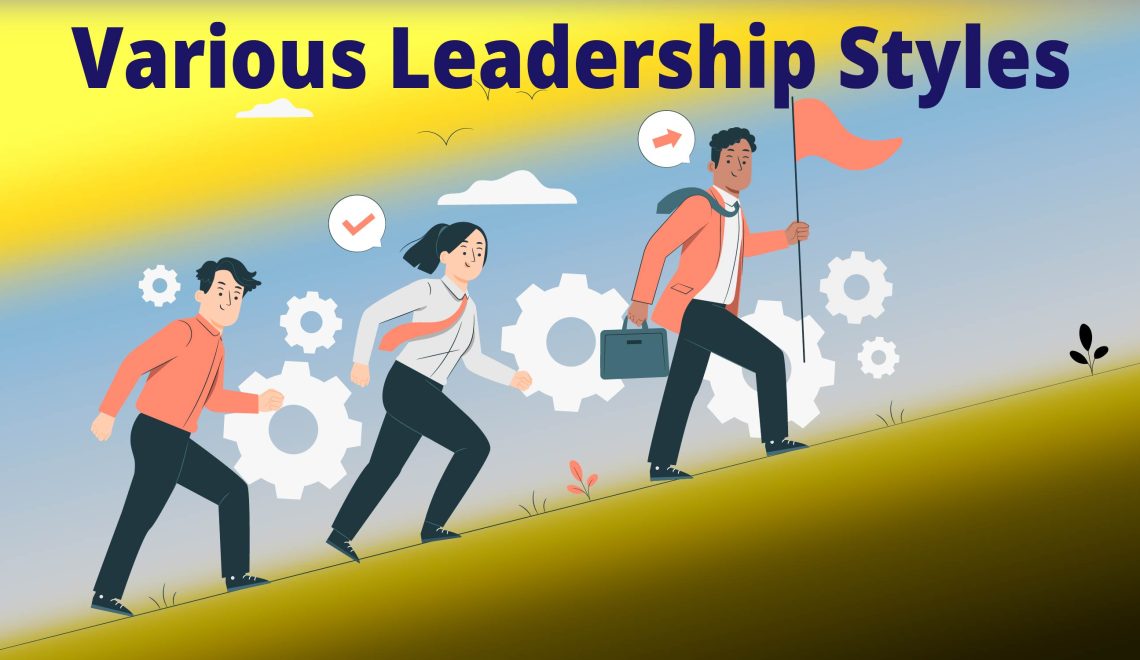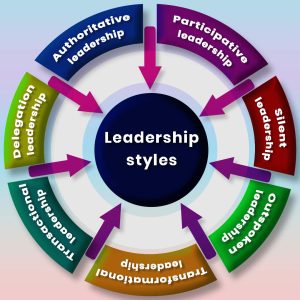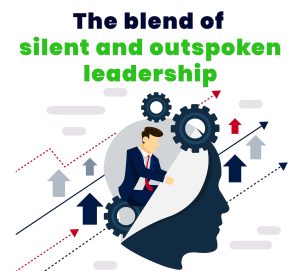
Leaders as individuals have varying character traits. Some may be silent while others are outspoken. Do these qualities of a leader being introverted or extroverted affect the business outcome? Among the various leadership styles, which is the best kind of leadership – silent or outspoken?
The stereotypical notion of a leader is an individual who is aggressive, dominant, strong-willed, and extroverted. An outspoken leader is considered a person who can exert command across all levels of the organization, align everyone with the overall goals, and ensure the best business outcomes. Often, silent leaders are viewed as weak leaders who may not be able to convince all stakeholders about the strategies and inspire the entire team to work in unison toward the business objectives.
But being introverted need not be a sign of weakness and we need to change the notion of viewing silence as an incapability to lead people. But what could be an ideal leadership style considering the ever-evolving business landscape where the internet is shrinking the world and connecting people and organizations in ways never imagined before?
Characteristics of organizational leadership
What is organizational leadership?
In simple terms, organizational leadership is an approach in which leaders set the strategic direction of the organization and also motivate the team to successfully align themselves to the business goals and execute their tasks. Effective organizational leadership requires a strong ability to influence people and also a high level of emotional intelligence. Some of the leadership qualities that define great leaders are vision, responsibility, strategic thinking, flexibility, and dependability. Transparency in communication and integrity in actions are other essential traits for successful leadership. Leadership must also encourage creativity and risk-taking and have the ability to balance the needs of employees from diverse cultures.
Various leadership styles

The common various leadership styles are authoritative leadership, participative leadership, transactional leadership, delegation leadership, transformational leadership, silent leadership, and outspoken leadership. Each leadership style has its own merits and demerits and every leader has to gain an understanding of the impact of their leadership style on the team to ensure better business performance. This can help to eliminate the weakness in your leadership style in comparison with the organizational culture and incorporate the right leadership traits.
In this article let us examine the merits and demerits of silent leadership and outspoken leadership as the question about the impact of these two styles is a prominent one in the modern business world.
Which leadership styles are the best – the median path
I appreciate the virtues of both silent and outspoken leadership. The two styles have their own pros and cons. Nevertheless, the world is changing every day, especially with the onset of the COVID-19 pandemic. Businesses are no longer run within the confines of the four walls of an office or meeting room. Decision-makers and other stakeholders are spread across different corners of the globe. Today’s leaders are faced with the challenge of managing geographically dispersed teams using virtual technology. Though the scenario might change as the pandemic recedes, we might continue to deal with huge volumes of business communications and decisions happening over digital platforms.
Since face-to-face interactions are diminishing, outspoken leadership could act as an intimidating factor in many scenarios. New faces in an organization might not be willing to share their ideas for fear of retribution. An outspoken leader often overshadows others in virtual settings and this could contribute to reduced innovation across the organization.
However, one cannot also recommend silent leadership as the best leadership style since it lacks the desired levels of control in a virtual setting. The majority of modern-day organizations deal with a culturally diverse workforce and introversion might not be the right leadership trait to inspire and guide a large group consisting of individuals from diverse backgrounds.
The blend of silent and outspoken leadership

Modern business requires leaders who can follow the median path blending silence and bold expression to inspire and lead all stakeholders in unison toward the overall organizational objectives by successfully overcoming the growing physical distance of the internet era. The need of the hour is leaders who are dynamic and confident but at the same time not dominant or over-aggressive.
They need to develop the right people management skills so that employees trust them and approach them without fear of resolving any issues, big or small. Leaders must not be focused on showcasing their professional achievements. They have to be an ideal team player who willingly gives credit for achievements to the team and shoulder the ownership of failures. Employees would connect better to such a leadership style and feel more inspired to put in their best efforts toward any task.
Ideally, both silent and outspoken leaders need to work towards imbibing a human approach in their leadership style. They have to develop the quality of being observant of the entire team. They must make a conscious effort to be in touch with the employees on a personal level. This will help to establish better relationships and trust and also ensure that the team is quick to adhere to their instructions. Such emotional connections build the necessary rapport to establish the leader as a facilitator rather than as a boss. It helps to connect the entire team strongly with the leader and creates a structure where tasks are executed not based on command control but based on micromanagement and trust.
Final thoughts
Ultimately leadership is all about leading by passion. The nature of various leadership styles such as introversion or extroversion need not affect the outcome. When leaders are committed to their goals and are driven by a burning desire to achieve the same, they would definitely motivate and align others to follow them. However, leaders must always strive to strike the right balance between silence and bold expression. Silence has its virtue such as being able to judge situations from a calmer perspective while an outspoken style of leadership can capture people’s attention faster. Following a middle ground is more suited to the evolving business dynamics of diminishing global boundaries and virtual workflows.
What does it mean by a quiet leader?
Quiet leaders are open-minded and focus on leading through actions rather than words.
Does a leader need to be loud?
Leaders do not have to be loud but need to have presence and integrity.
What are the top 5 characteristics of a leader?
The top 5 characteristics of a leader are strategic thinking, transparency, focus on team development, cross-cultural communication, and inclusion.
How do you establish yourself as a leader?
You can establish yourself as a leader by practising integrity, transparency, and walking the talk.



